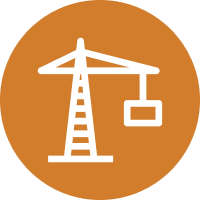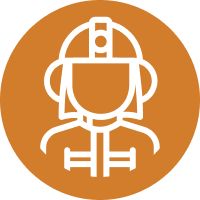
This blog is part four in a six-part series discussing how Digital Transformation will affect Emergency Preparedness. Throughout this series, we explore how Digital Transformation is helping to positively impact Emergency Readiness in the Petrochemical and Refining sectors.
Blog Series Introduction: Emergency Preparedness and Digital Transformation
As business people, we are inundated with terms that become so commonly used that they begin to lose their meaning. The affectionate label for these terms among our irreverent colleagues is “BS Bingo”, and we all can ring the bell in our minds when we hear them. These terms get this way because, when they are coined, they are incredibly powerful. Business leaders use them to convey vision and direction, so the rank and file adopt them, leading to overuse.
The subject of this blog series, Digital Transformation, is moving toward this designation. It is a powerful term that denotes the application of technology to improve the way we get work done. It is incredibly broad because technology can reach every corner of the enterprise, so it means radically different things to different people. In our arena, emergency response for high hazard industrial sites, it’s important to keep in mind that there is a very specific and unique set of requirements that define Digital Transformation for us. To achieve its benefits, we have to stay hyper-focused on what’s important to us. Here are 2 reasons why:
Few Industries Are As Demanding As Ours:
The inherent hazards that stem from our production processes require our emergency response to be operationally intense. Hazards are constantly at hand and the potential of an emergency is consistently higher than other segments of the economy. As a result, our facilities have a very low tolerance for the risks that are inherent in leading-edge technological advances that are a prominent part of any digital transformation landscape. So, a technology that may be fine in a more benign setting like a warehouse probably needs a lot more maturity before we can risk human life in our hazardous workplace.
Our Needs Seem Illogical to Outsiders:
My family has been in this industry for almost a century but I still can be surprised by what I learn by listening to our market. My father spent 43 years working for ExxonMobil and he had a saying that sticks with me: “In this business, it’s just one damn thing after another.” When I entered the business with DuPont, we used to chuckle about it because I found it to be true too. Hazardous workplaces, global trade and economics, and government regulation are just a few of the factors that make our industry a challenge to serve. That means that applying technology to our processes requires that we exert an intense focus on what actually works, as opposed to what the hottest new thing is.
Given the reality of our industry, it follows that a digital transformation strategy is de-risked by keeping fitness for use at the forefront of product evaluations. To keep this focus, ask these questions:
Is the technology reliable for our industry?
- Can it adapt to most of the scenarios that we experience?
- Has it been used in our industry successfully yet? Is there a user willing to recommend it?
- Is it mature enough to be a good economic value?
- Will it work in an environment like ours with lots of physical obstructions?
Is the technology designed to address the problem it is being applied to in our industry?
- The convenience of an existing product can be seductive but if it needs to be repurposed to achieve your goals, it’s likely you’ll be investing in something new in a few years.
Will it work in our culture?
- Can we get our people to adopt it?
- Does it fit with our business processes?
Is the manufacturer focused on our industry so they are aligned with our changing needs?
- Has the manufacturer demonstrated a commitment to the technology, to our industry, or both?
- Do they have a client list that reflects our industry?
- Does their product roadmap align with our industry?
Answering these questions leads to selecting a variety of best in class solutions rather than an all-in-one approach. By selecting the best in class, we can solve our unique problems today while assuring that our technology investment remains productive far into the future. This is imperative when the job is saving lives in a dangerous environment.






